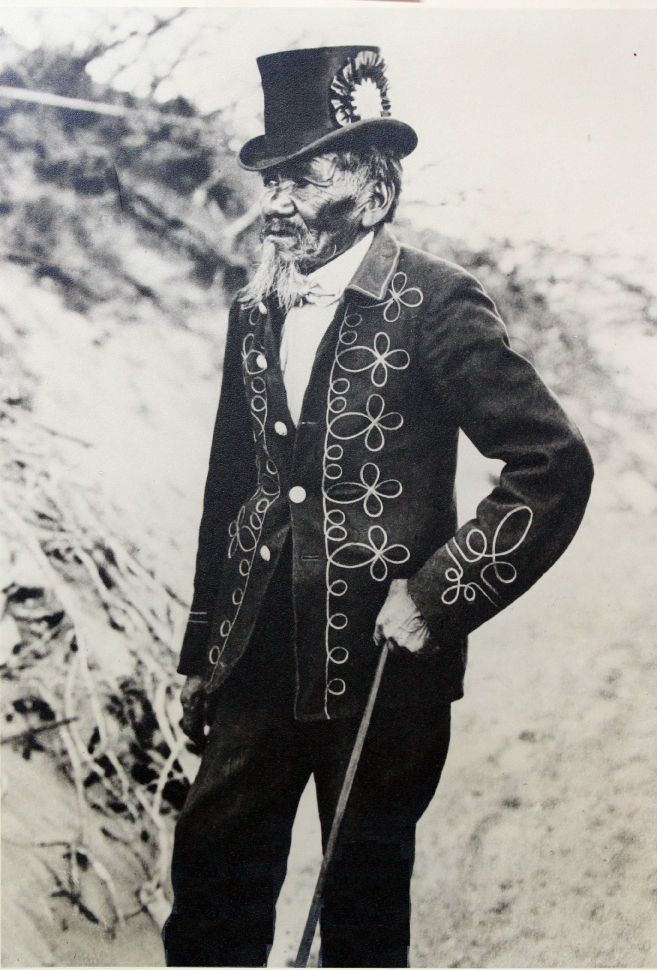Dat-So-La-Lee, also known as Louisa Keyser, was a remarkable Native American basket weaver born around 1829 in the Washoe tribe territory near Carson City, Nevada. She is renowned for her exceptional craftsmanship and intricate designs, which elevated Washoe basketry to an art form admired worldwide. Dat-So-La-Lee’s grave is the subject of Nevada State Historical Marker 77, located in Carson City, Nevada.

Growing up in a traditional Washoe community, Dat-So-La-Lee learned the ancient art of basket weaving from her mother and grandmother, who were esteemed weavers themselves. From a young age, she displayed a natural talent and a keen eye for detail, quickly mastering the intricate techniques of her ancestors.
Throughout her life, Dat-So-La-Lee dedicated herself to perfecting her craft, spending countless hours gathering materials from the surrounding landscape and weaving them into exquisite baskets. She incorporated traditional Washoe designs and motifs, often inspired by nature, into her work, infusing each piece with cultural significance and symbolism.
Dat-So-La-Lee’s baskets gained widespread recognition for their exceptional quality and beauty. They were sought after by collectors and enthusiasts from around the world, with some of her pieces fetching high prices at auctions and exhibitions. Her reputation as a master weaver grew steadily, cementing her legacy as one of the greatest Native American basket makers of her time.
Despite facing numerous challenges and hardships throughout her life, including the encroachment of settlers on traditional Washoe lands and the decline of traditional basketry practices, Dat-So-La-Lee remained steadfast in her dedication to her craft. She continued to weave until late in her life, preserving and revitalizing Washoe basketry traditions for future generations.
Dat-So-La-Lee’s legacy endures to this day, not only through her exquisite baskets but also through the influence she had on subsequent generations of Native American basket weavers. Her work has been celebrated in museums and galleries worldwide, serving as a testament to the rich cultural heritage of the Washoe people and the enduring power of artistic expression.
Nevada State Historic Marker 77
Dat-So-La-Lee
Famed Washoe basket maker, Datsolalee, is buried in this cemetery along with many other Washoe weavers. Also known as Louisa Keyser. Dat So La Lee, and Dabuda, over 120 of her major documented baskets were made expressly for sale to Arts and Crafts collectors from 1895 until her death in 1925 under patronage of the Cohn family. Datsolalee’s baskets are prized by collectors and displayed in museums across the country.
Utilitarian, straight-walled, decorated coiled willow basketry is a Washoe tradition extending back thousands of years. Datsolalee brought international fame to the spherical Washoe degikup willow basket and highlighted the form with innovative decorative motifs in bracken fern and redbud Fibers. She and her patrons promoted this craft to the public, elevated it to an art form, and, most importantly, motivated basketry production by other tribal members during a period when the Washoe were recovering from mid-nineteenth- century loss of their homelands and aboriginal life ways.
STATE HISTORICAL MARKER NO. 77
STATE HISTORIC PRESERVATION OFFICE
RENO CHAPTER, DAUGHTER OF THE AMERICAN COLONISTS
AND
IN RECOGNITION OF THE INVALUABLE ASSISTANCE OF THE WASHOE INDIANS
Nevada State Historic Marker 77 Map
Nevada State Historic Marker 77 Summary
| Name | Dat-So-La-Lee |
| Location | Carson City, Nevada |
| Longitude, Latitude | 39.1181, -119.7545 |
| Nevada State Historical Marker | 77 |
Nevada State Historical Markers identify significant places of interest in Nevada’s history. The Nevada State Legislature started the program in 1967 to bring the state’s heritage to the public’s attention with on-site markers. These roadside markers bring attention to the places, people, and events that make up Nevada’s heritage. They are as diverse as the counties they are located within and range from the typical mining boom and bust town to the largest and most accessible petroglyph sites in Northern Nevada Budget cuts to the program caused the program to become dormant in 2009. Many of the markers are lost or damaged.
